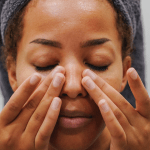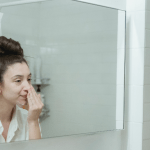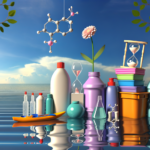Phthalates and Health Risks
Phthalates, a group of chemicals commonly found in personal care products, are known for their role as plasticizers in polyvinyl chloride (PVC) plastics, imparting flexibility and durability. However, these compounds are also prevalent in a variety of beauty products, ranging from nail polishes to shampoos, due to their ability to hold color and scent. As endocrine-disrupting chemicals (EDCs), phthalates can interfere with the body’s hormone systems, potentially leading to a host of health issues.
Potential Impact on Pregnancy Outcomes and Breast Cancer Risk
Research has raised concerns about the potential health risks associated with phthalate exposure, particularly in vulnerable populations such as pregnant women and infants. Studies suggest that phthalates may adversely affect pregnancy outcomes, contributing to complications such as gestational diabetes and preterm birth. Moreover, there is growing evidence to suggest a link between phthalate exposure and an increased risk of breast cancer, prompting calls for more stringent regulation and public health interventions.
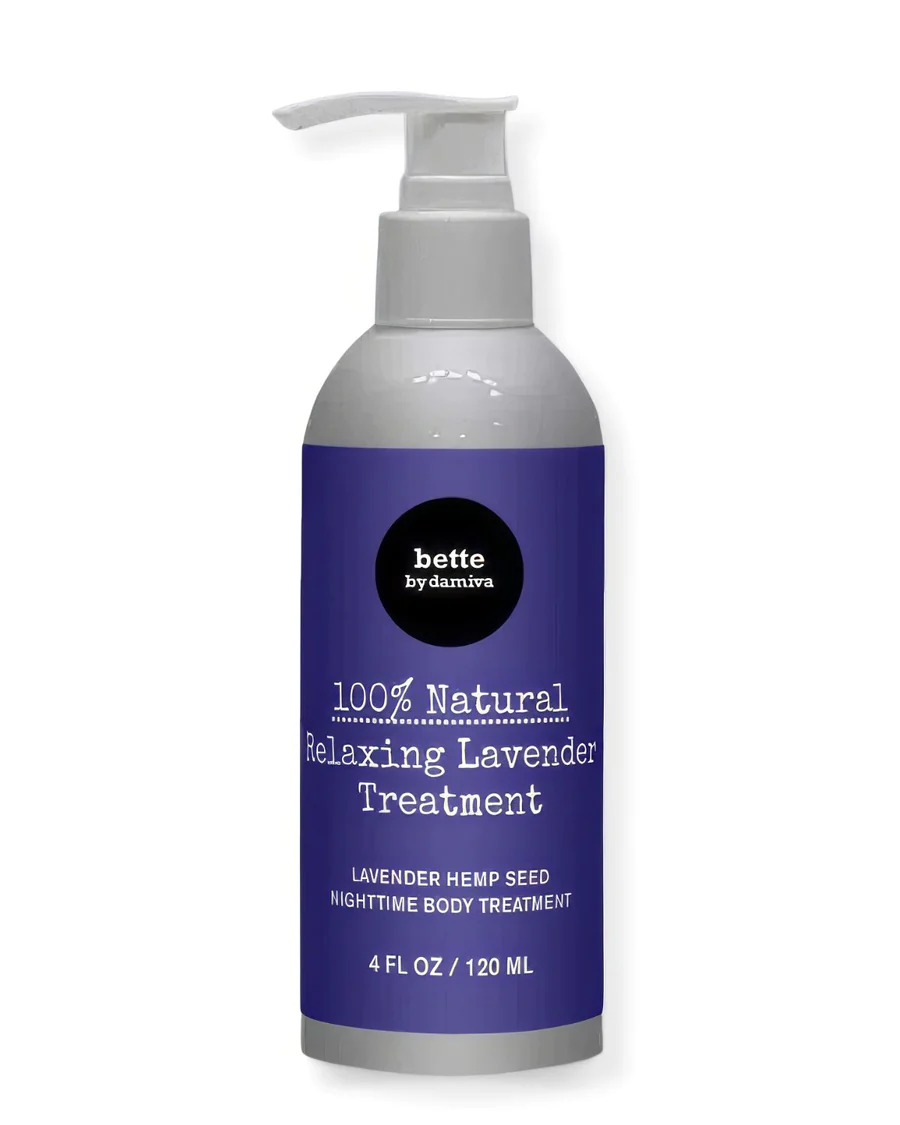
Bette 100% All-Natural Relaxing Lavender Body Lotion.
Chemical-Free
Your relaxing night time body moisturizer to leave the day’s stress behind. Decompress and wish your body good night with the calming scent of lavender.
The Role of Environmental Justice in Product Exposure
The issue of phthalate exposure transcends individual product use and delves into the broader context of environmental justice. Disproportionate exposure to harmful chemicals in beauty products among minority and low-income populations highlights systemic disparities. Factors such as targeted marketing, lack of access to safer alternatives, and occupational exposure in beauty salons contribute to an uneven burden of health risks, underscoring the need for a more equitable approach to environmental health.

Do you have the most commonly used but toxic, disease bringing chemicals in your skin care? Many chemicals in skincare are hormone disruptors and make menopause symptoms worse.
Find out more…
The ERGO Study and Its Findings
Objectives and Methodology of the ERGO Study
The Environmental Reproductive and Glucose Outcomes (ERGO) study, led by epidemiologist Tamarra James-Todd at the Harvard T.H. Chan School of Public Health, aims to investigate the influence of environmental factors on pregnancy and postpartum health. Specifically, the ERGO study focuses on how exposure to phthalates, parabens, and other chemicals found in everyday items like personal care products, food packaging, and medical devices can disrupt the endocrine system during critical periods such as pregnancy.
The methodology of the ERGO study involves a longitudinal cohort design, where pregnant women are recruited and followed through their pregnancy and into the postpartum period. Biological samples, including urine, are collected at various time points to measure the concentrations of phthalate metabolites and parabens. These biomarkers of exposure are then correlated with health outcomes in both mothers and their infants.
Link Between Phthalates, Parabens, and Hormonal Disruption
Phthalates and parabens are known endocrine disruptors, which means they can interfere with the body’s hormonal balance. The ERGO study has contributed to the body of evidence showing that these chemicals can mimic, block, or alter hormone levels, leading to potential health risks. For pregnant women, exposure to these substances is particularly concerning as they can cross the placental barrier and affect fetal development.
Research within the ERGO study framework has demonstrated that exposure to certain phthalates and parabens is associated with changes in hormone levels, which are critical for maintaining a healthy pregnancy and fetal growth. These disruptions can lead to complications such as gestational diabetes, preterm birth, and maternal obesity, which are risk factors for developing breast cancer later in life.
Implications for Pregnancy and Postpartum Health
The findings of the ERGO study have significant implications for pregnancy and postpartum health. The study has shown that higher concentrations of phthalate metabolites in urine during pregnancy are associated with an increased risk of adverse outcomes, including preterm birth and gestational diabetes. These conditions not only affect the immediate health of the mother and child but also have long-term implications for chronic diseases and reproductive health.
Furthermore, the ERGO study has modeled the potential impact of reducing phthalate exposure on the risk of preterm birth, finding that lower exposure levels could significantly decrease this risk. This highlights the importance of addressing environmental health disparities and ensuring that all women have access to safer personal care products, particularly during pregnancy and the postpartum period.
In conclusion, the ERGO study underscores the need for public health interventions and policy changes to reduce exposure to endocrine-disrupting chemicals in beauty products, with the goal of improving health outcomes for mothers and their children and reducing health disparities.

Doubting chemicals in skincare and femcare? Well done! Choose chemical-free products whenever possible.
Disparities in Phthalate Exposure
Higher Phthalate Levels in Minority Populations
Research has consistently shown that minority populations, particularly non-Hispanic Black and Hispanic women, have higher concentrations of phthalate metabolites in their bodies compared to White women. This disparity is evident during critical periods such as pregnancy, where the presence of these endocrine-disrupting chemicals can have significant implications for both maternal and fetal health. The higher levels of phthalate exposure in these communities are not simply a matter of individual choice but are influenced by broader systemic and structural factors, including socioeconomic status, access to safer products, and targeted marketing practices.
Correlation with Gestational Diabetes and Preterm Birth
Phthalates have been linked to adverse pregnancy outcomes, including gestational diabetes and preterm birth, which are more prevalent in Hispanic and Asian individuals, and non-Hispanic Black individuals, respectively. The correlation between phthalate exposure and these conditions is particularly concerning given the long-term health implications for both mother and child. For instance, gestational diabetes can increase the risk of developing type 2 diabetes later in life, while preterm birth is associated with a range of developmental issues for the infant.
Impact of Reducing Phthalate Exposure on Health Outcomes
Efforts to reduce phthalate exposure could lead to significant improvements in health outcomes, particularly for minority populations. Studies have modeled the potential impact of reduced phthalate exposure and found a significant decrease in the risk of preterm birth. This suggests that interventions aimed at lowering phthalate levels in personal care products could be an effective strategy for addressing some of the health disparities faced by minority groups. Moreover, such interventions could also contribute to reducing the risk of developing breast cancer later in life, as there is a connection between pregnancy-related health outcomes and breast cancer risk.
Conclusion: The disparities in phthalate exposure among minority populations are a clear indication of environmental injustice. Addressing these disparities requires a multifaceted approach that includes regulatory changes, improved access to safer products, and targeted public health interventions. By reducing exposure to phthalates, we can take a significant step towards improving health equity and reducing the burden of disease among the most vulnerable groups in society.

Feeling You Have a Right to Safe Beauty & Fem Care?
If so, it may be time for a change. It starts with knowledge. We have a few suggestions in our new guides.
Beauty Justice and Product Usage
Racial and Ethnic Disparities in Personal-Care-Product Use
Personal care products are a staple in daily routines, yet not all products are created equal, nor are they used uniformly across different populations. Research led by Tamarra James-Todd, Ph.D., has highlighted significant racial and ethnic disparities in the use of personal care products. Non-Hispanic Black and Hispanic women tend to use more fragranced products and hair oils, while non-Hispanic White women more frequently use sunscreen. This variance in product usage is not merely a matter of preference but is intricately linked to higher concentrations of phthalate metabolites found in minority populations, which can have profound health implications, particularly during pregnancy.
The Concept of Beauty Justice
The term “beauty justice” emerges from the recognition that access to safer personal care products is unevenly distributed, often along racial and ethnic lines. Beauty justice seeks to address the systemic inequities that lead to differential exposure to harmful chemicals found in beauty products. James-Todd’s work underscores the need for beauty justice, as the current marketplace often leaves women of color with limited options to safer alternatives, thereby increasing their risk of exposure to endocrine-disrupting chemicals.
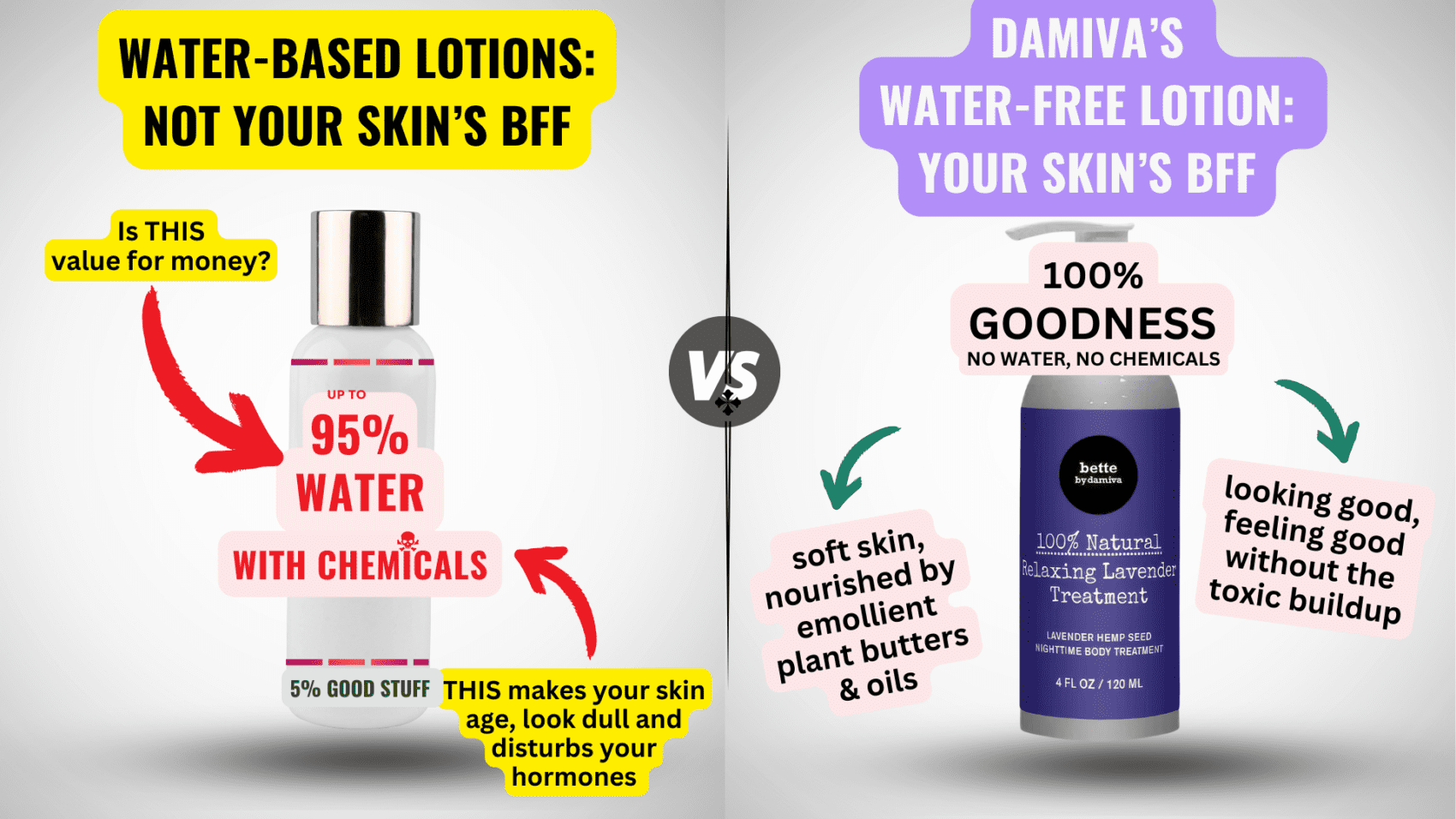
THEN IT CONTAINS TOXIC CHEMICALS. WHY RISK IT GETTING SICK? GO CHEMICAL FREE.
Association Between Hair Product Use and Preterm Birth
One of the most striking findings in James-Todd’s research is the association between the use of hair products and preterm birth. Daily use of hair oils late in pregnancy was correlated with an eight-day earlier delivery. This significant discovery points to the potential for reducing the likelihood of preterm birth—and by extension, associated health risks like breast cancer later in life—by minimizing the use of products with high concentrations of harmful chemicals. The implications of this research are profound, suggesting that beauty product choices may have a direct impact on maternal and infant health outcomes.
Furthermore, Marissa Chan’s study within the Environmental Reproductive Justice Lab, which assessed over 14,000 products in Boston neighborhoods, found that products with higher hazard scores were more readily available in lower-income neighborhoods and communities of color. This availability disparity underscores the importance of structural factors in environmental health disparities and the urgent need for beauty justice.
In conclusion, the concept of beauty justice is not only about equitable access to safer beauty products but also about the broader implications of such disparities on public health. The association between hair product use and preterm birth is a stark reminder of the potential consequences of these disparities. As we move forward, it is imperative to address these issues head-on, ensuring that all individuals, regardless of race or ethnicity, have the opportunity to make safe and informed choices about their personal care products.
Do you know the three main ways that your body gets in touch with harmful chemicals with everyday products? Knowledge is Power!
The Ultimate Detox Guide will tell you how to lower your exposure to harmful chemicals!

Access to Safer Personal Care Products
Study on Availability of Hair Products with High Hazard Scores
The availability of safer personal care products is a critical factor in reducing exposure to harmful chemicals. A study conducted by Marissa Chan, a doctoral student in the Environmental Reproductive Justice Lab, aimed to identify where hair products with higher concentrations of environmental chemicals are sold. The study evaluated over 14,000 products across Boston neighborhoods and assigned each product a hazard score based on the presence of endocrine-disrupting chemicals such as phthalates and parabens.
The findings were alarming: stores in lower-income neighborhoods and communities of color had a more than two-fold increased risk of carrying hair products with moderate or high hazard scores compared to predominantly white or higher-income communities. This disparity highlights the structural challenges faced by minority populations in accessing safer personal care products.
Socioeconomic and Racial Disparities in Product Availability
The study’s results underscore the socioeconomic and racial disparities in the availability of safer personal care products. The distribution of products with high hazard scores is not random but is influenced by the demographic composition of neighborhoods. Stores in affluent areas are more likely to stock products with lower hazard scores, offering their customers a healthier range of choices.
In contrast, minority populations, particularly non-Hispanic Black and Hispanic women, often have limited access to products free from harmful chemicals. This lack of access contributes to higher levels of phthalate metabolites found in their urine during pregnancy, as reported by James-Todd and colleagues. The correlation between product availability and health outcomes cannot be ignored, as it plays a significant role in perpetuating health disparities.

From unhappy, dry, and sandpaper to silky, smooth and feeling good. That’s Cleo. Cleo is a 100% natural labial balm to moisture and soothe “your other lips”. Cleo is chemical-free, water-free, pH optimized and helps maintain and restore your delicate labial skin’s natural flora. Ideal for daily use or as needed. Get the most silky, lovable lips ever.
Structural Factors Influencing Environmental Health Disparities
Structural factors such as place, access, and availability significantly impact environmental health disparities. The study by Chan and colleagues illustrates that environmental risk is not merely an individual choice but is shaped by broader societal and economic forces. The concentration of stores selling high-hazard products in disadvantaged neighborhoods is a reflection of systemic issues that go beyond personal care product use.
These structural factors are often rooted in historical and ongoing patterns of segregation, economic inequality, and targeted marketing practices. As a result, minority populations face a double burden: they are more likely to be exposed to harmful chemicals in personal care products and less likely to have access to healthier alternatives.
In conclusion, the study on the availability of hair products with high hazard scores reveals a stark reality: reducing phthalate exposure and associated health risks requires addressing the underlying socioeconomic and racial disparities in product availability. Efforts to ensure access to safer personal care products must be part of a broader strategy to promote environmental health equity and justice.

Common chemicals can hurt your gut health, your skin health, your mental health, and immune system.
Do you know the three main ways that your body gets in touch with harmful chemicals?
Knowledge is Power!
The Ultimate Detox Guide will tell you how to lower your exposure to harmful chemicals!
Strategies for Reducing Exposure and Risks
Public Health Recommendations for Safer Product Use
Public health authorities have a pivotal role in guiding the public towards safer personal care product use. To reduce phthalate exposure, they recommend:
- Avoiding products with “fragrance” or “parfum” on the label, as these may contain phthalates.
- Choosing personal care products with a Safer Choice seal, indicating they are free from phthalates.
- Reducing consumption of highly processed foods, which are often associated with higher phthalate levels.
- Opting for fresh and organic foods when possible, as they are less likely to contain these chemicals.
- Using glass or stainless steel for food storage instead of plastic containers.
These recommendations aim to empower individuals to make informed choices and reduce their overall exposure to phthalates.
Policy Implications for Regulating Chemicals in Beauty Products
Policy changes are essential for systemic reduction of phthalate exposure. Governments and regulatory bodies are urged to:
- Enforce stricter regulations on the use of phthalates in beauty and personal care products.
- Implement comprehensive labeling requirements to ensure transparency about the presence of phthalates.
- Encourage the development and use of safer chemical alternatives in product manufacturing.
- Conduct regular safety assessments of chemicals used in consumer products to protect public health.
By updating policies and regulations, authorities can significantly lower the risk of phthalate exposure and its associated health disparities.
Educational Initiatives to Promote Awareness and Change
Educational initiatives play a crucial role in raising awareness about the risks of phthalate exposure and promoting behavioral change. These initiatives should focus on:
- Developing and disseminating educational materials that inform consumers about the potential dangers of phthalates.
- Conducting workshops and seminars to educate the public on identifying and choosing safer products.
- Collaborating with community leaders and healthcare providers to reach a wider audience, particularly in vulnerable communities.
- Utilizing web-based platforms and social media to engage younger demographics and spread awareness.
Through education, individuals can become advocates for their health and agents of change in their communities, contributing to a decrease in phthalate exposure and related health risks.
Conclusion and Future Directions
Summarizing the Importance of Reducing Phthalate Exposure
The evidence presented throughout this article underscores the critical importance of reducing phthalate exposure in beauty products. Phthalates, as endocrine disruptors, have been linked to a range of health risks, including hormonal imbalances, pregnancy complications, and increased cancer risk. The ubiquitous nature of these chemicals in personal care products means that the potential for exposure is high, particularly for women and adolescent girls who tend to use more of these products. By reducing phthalate exposure, we can potentially lower the incidence of associated health risks and contribute to the overall well-being of individuals and communities.
The Role of Ongoing Research in Addressing Health Disparities
Ongoing research plays a pivotal role in addressing health disparities related to phthalate exposure. Studies like the ERGO study provide valuable insights into the link between phthalates, parabens, and hormonal disruption, particularly in vulnerable populations. By continuing to investigate how these chemicals affect different groups, researchers can inform public health strategies and policies aimed at reducing exposure and mitigating risks. Moreover, research can guide the development of safer personal care products, ensuring that all populations have access to healthier options.
Call to Action for Environmental Health Equity
It is imperative that we strive for environmental health equity, where every individual has the opportunity to avoid exposure to harmful chemicals in beauty products regardless of socioeconomic status, race, or ethnicity. This call to action involves several key strategies:
- Public Health Recommendations: Health authorities should provide clear guidelines on the use of safer personal care products and actively promote alternatives that are free from phthalates and other endocrine disruptors.
- Policy and Regulation: There is a need for stricter regulation of chemicals in beauty products. Policymakers should work towards legislation that requires full disclosure of ingredients and restricts the use of harmful substances.
- Educational Initiatives: Education is crucial in raising awareness about the risks of phthalate exposure. Initiatives should be aimed at teaching consumers how to identify and choose safer products, as well as understanding the potential health implications of their choices.
In conclusion, reducing phthalate exposure in beauty products is not only a matter of individual health but also a matter of public interest and social justice. As we move forward, it is essential that research, policy, education, and community engagement converge to create a safer and more equitable environment for all.





